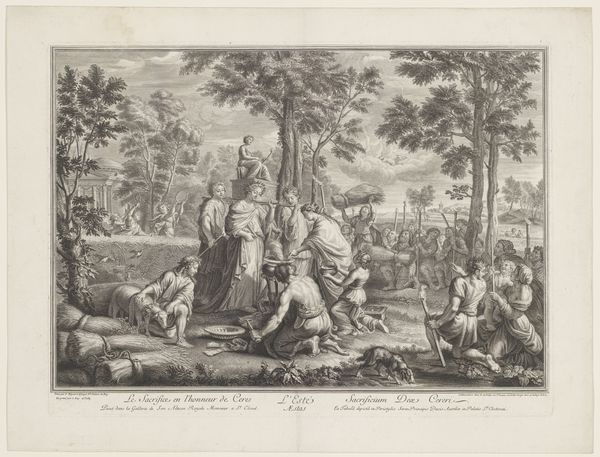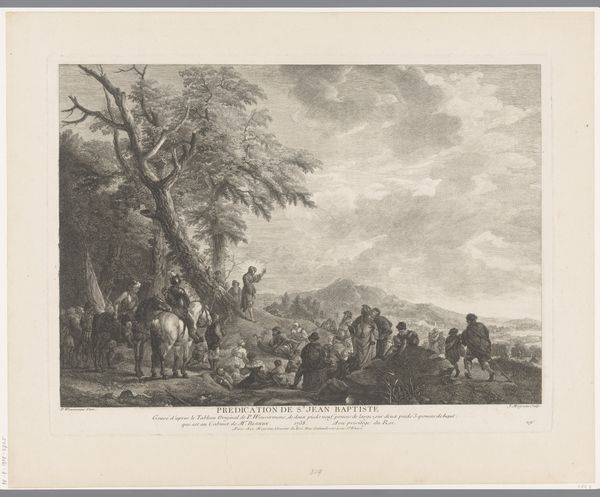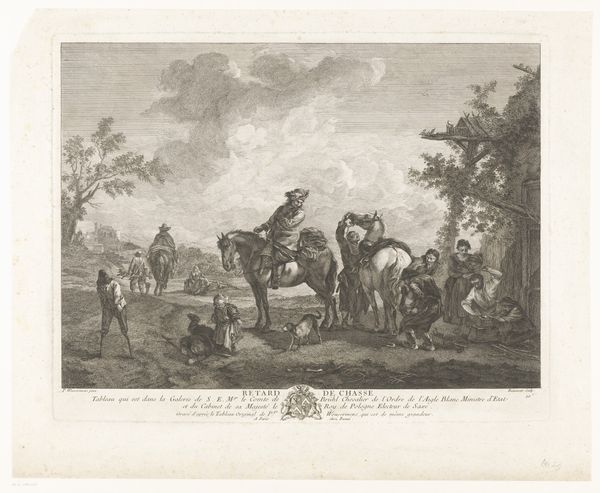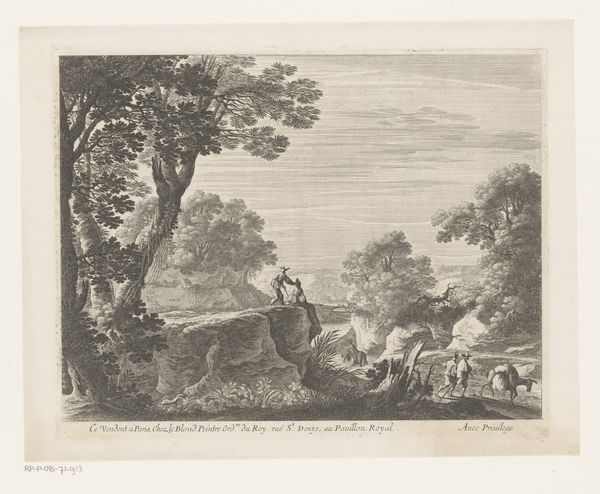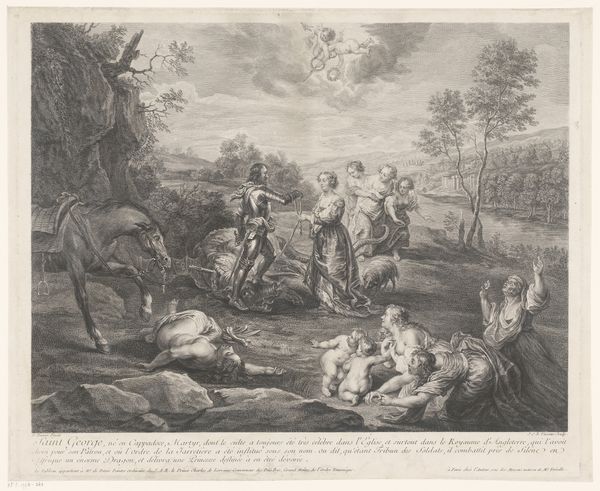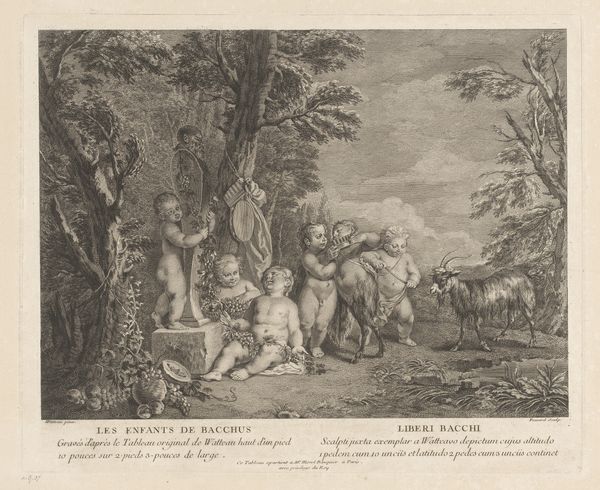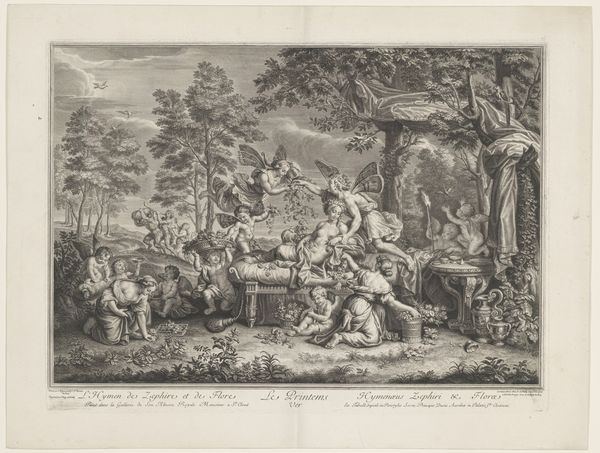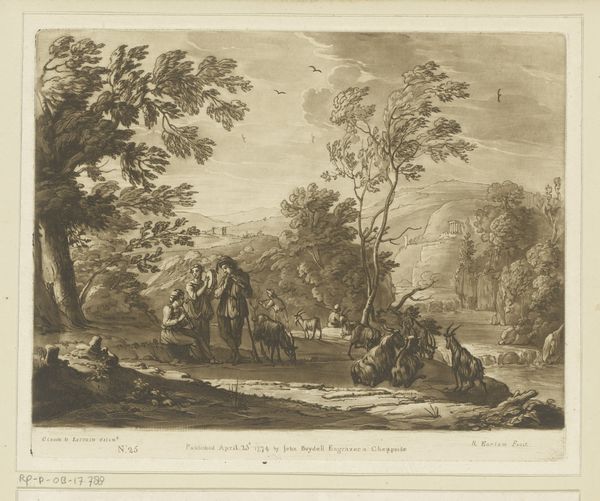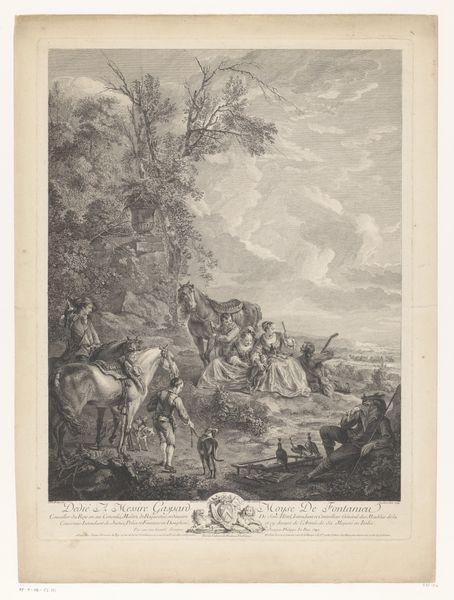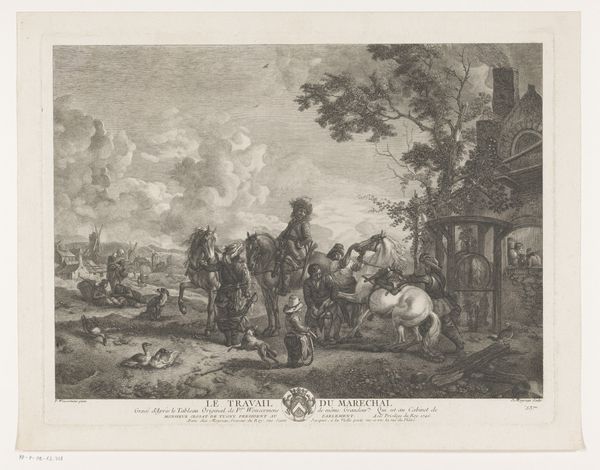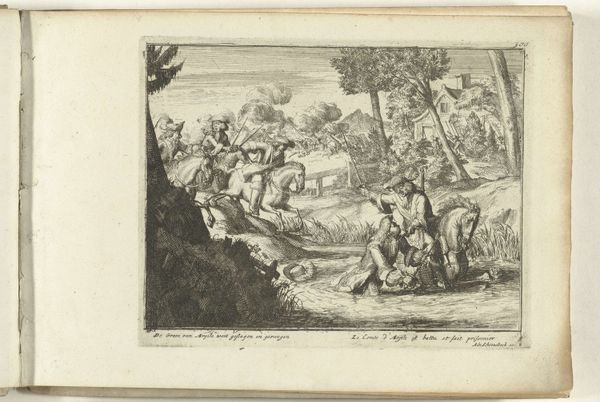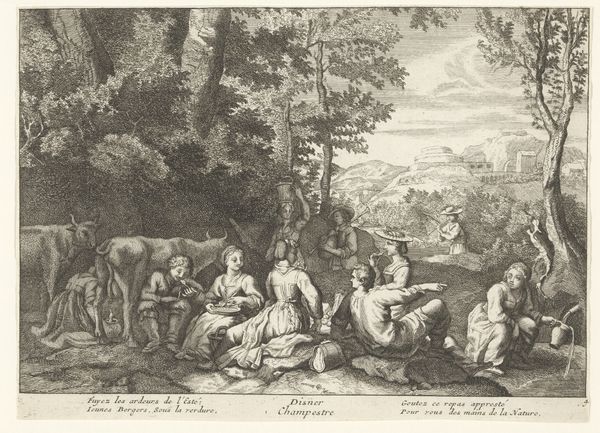
print, engraving
#
baroque
# print
#
old engraving style
#
landscape
#
genre-painting
#
history-painting
#
engraving
Dimensions: height 505 mm, width 622 mm
Copyright: Rijks Museum: Open Domain
Curator: This is "Jacob's Departure," an engraving by Thomas Major, created in 1754. Editor: It has such a theatrical quality to it. All these figures frozen in mid-motion. And the monochromatic tones evoke a sense of solemnity. Curator: The image depicts the biblical story of Jacob leaving Laban's household with his family and possessions. This print was based on a painting by a then-prominent artist, likely intended to circulate the image widely, increasing its visibility amongst a broader audience, even those unable to see the original. Editor: You can almost feel the dust kicking up from the ground as Jacob’s family journeys onward. The composition directs our eyes carefully to Jacob on horseback as the most important figure here. What can you tell me about his clothing? Curator: Jacob is clad in relatively simple robes, yet sits atop a horse, immediately elevating his status within the composition, a choice with specific social connotations in 18th century England. Consider also, the print is dedicated to the Princess Dowager of Wales. Royal patronage shaped the art market then; this dedication served to elevate Major’s standing and ensured distribution amongst influential circles. Editor: It's remarkable how Major used only lines to create depth and texture. Look at the way he differentiates between the smooth skin of the figures and the rough bark of the trees, all using varying densities of etched lines. Curator: Indeed. Furthermore, remember history painting and genre scenes at this time often served didactic purposes, reinforcing societal norms and expectations through biblical or historical narratives. The virtues of family, perseverance, and faith are all possibly at play here. Editor: Looking at it from an artistic perspective, the landscape seems to almost frame the human drama playing out in the center, drawing us to it like the first act of a stage play. Curator: Seeing how it reflects contemporary society allows us a more profound understanding of 18th-century artistic tastes and social structures. Editor: For me, breaking it down formally allows a new perspective for interpreting the meaning inherent in this skillful display of light and shadow.
Comments
No comments
Be the first to comment and join the conversation on the ultimate creative platform.
